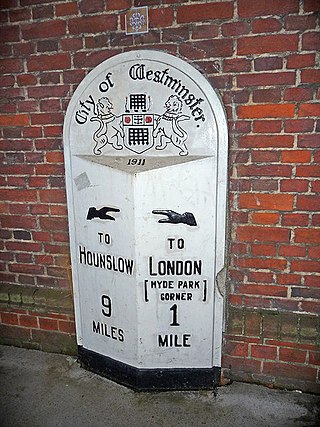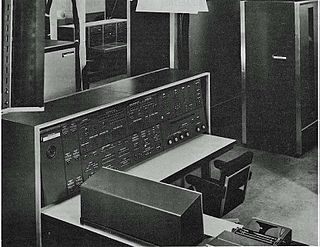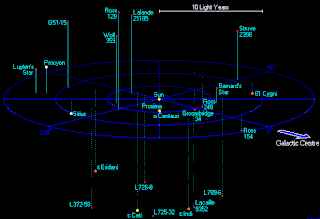Related Research Articles

The mile, sometimes the international mile or statute mile to distinguish it from other miles, is a British imperial unit and United States customary unit of length; both are based on the older English unit of length equal to 5,280 English feet, or 1,760 yards. The statute mile was standardised between the Commonwealth of Nations and the United States by an international agreement in 1959, when it was formally redefined with respect to SI units as exactly 1,609.344 metres.

The speed of light in vacuum, commonly denoted c, is a universal physical constant that is exactly equal to 299,792,458 metres per second. According to the special theory of relativity, c is the upper limit for the speed at which conventional matter or energy can travel through space.

In kinematics, the speed of an object is the magnitude of the change of its position over time or the magnitude of the change of its position per unit of time; it is thus a non-negative scalar quantity. The average speed of an object in an interval of time is the distance travelled by the object divided by the duration of the interval; the instantaneous speed is the limit of the average speed as the duration of the time interval approaches zero. Speed is the magnitude of velocity, which indicates additionally the direction of motion.
A nanosecond (ns) is a unit of time in the International System of Units (SI) equal to one billionth of a second, that is, 1⁄1 000 000 000 of a second, or 10−9 seconds.
A microsecond is a unit of time in the International System of Units (SI) equal to one millionth of a second. Its symbol is μs, sometimes simplified to us when Unicode is not available.
The metre per second is the unit of both speed and velocity in the International System of Units (SI), equal to the speed of a body covering a distance of one metre in a time of one second. According to the definition of metre, 1 m/s is exactly of the speed of light.
A picosecond is a unit of time in the International System of Units (SI) equal to 10−12 or 1⁄1 000 000 000 000 of a second. That is one trillionth, or one millionth of one millionth of a second, or 0.000 000 000 001 seconds.
The light-second is a unit of length useful in astronomy, telecommunications and relativistic physics. It is defined as the distance that light travels in free space in one second, and is equal to exactly 299792458 m.
Delay-line memory is a form of computer memory, mostly obsolete, that was used on some of the earliest digital computers, and is reappearing in the form of optical delay lines. Like many modern forms of electronic computer memory, delay-line memory was a refreshable memory, but as opposed to modern random-access memory, delay-line memory was sequential-access.
Nano is a unit prefix meaning one billionth. Used primarily with the metric system, this prefix denotes a factor of 10−9 or 0.000000001. It is frequently encountered in science and electronics for prefixing units of time and length.

The UNIVAC LARC, short for the Livermore Advanced Research Computer, is a mainframe computer designed to a requirement published by Edward Teller in order to run hydrodynamic simulations for nuclear weapon design. It was one of the earliest supercomputers.

In aviation, distance measuring equipment (DME) is a radio navigation technology that measures the slant range (distance) between an aircraft and a ground station by timing the propagation delay of radio signals in the frequency band between 960 and 1215 megahertz (MHz). Line-of-visibility between the aircraft and ground station is required. An interrogator (airborne) initiates an exchange by transmitting a pulse pair, on an assigned 'channel', to the transponder ground station. The channel assignment specifies the carrier frequency and the spacing between the pulses. After a known delay, the transponder replies by transmitting a pulse pair on a frequency that is offset from the interrogation frequency by 63 MHz and having specified separation.
The pulse-repetition frequency (PRF) is the number of pulses of a repeating signal in a specific time unit. The term is used within a number of technical disciplines, notably radar.
A radar system uses a radio-frequency electromagnetic signal reflected from a target to determine information about that target. In any radar system, the signal transmitted and received will exhibit many of the characteristics described below.

The AN/FPS-17 was a ground-based fixed-beam radar system that was installed at three locations worldwide, including Pirinçlik Air Base in south-eastern Turkey, Laredo, Texas and Shemya Island, Alaska.

Radar mile or radar nautical mile is an auxiliary constant for converting a (delay) time to the corresponding scale distance on the radar display.

A light-year, alternatively spelled light year, is a unit of length used to express astronomical distances and is equal to exactly 9460730472580.8 km, which is approximately 5.88 trillion mi. As defined by the International Astronomical Union (IAU), a light-year is the distance that light travels in vacuum in one Julian year. Despite its inclusion of the word "year", the term should not be misinterpreted as a unit of time.

In 2011, the Oscillation Project with Emulsion-tRacking Apparatus (OPERA) experiment mistakenly observed neutrinos appearing to travel faster than light. Even before the source of the error was discovered, the result was considered anomalous because speeds higher than that of light in vacuum are generally thought to violate special relativity, a cornerstone of the modern understanding of physics for over a century.
Measurements of neutrino speed have been conducted as tests of special relativity and for the determination of the mass of neutrinos. Astronomical searches investigate whether light and neutrinos emitted simultaneously from a distant source are arriving simultaneously on Earth. Terrestrial searches include time of flight measurements using synchronized clocks, and direct comparison of neutrino speed with the speed of other particles.